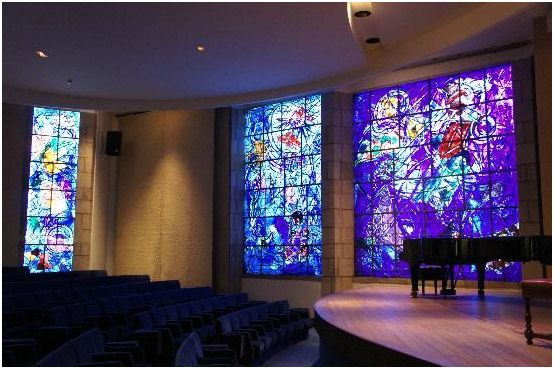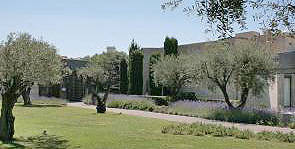
The Chagall Windows
All art has a purpose. Art, in its purest form, has beauty as its purpose. However, some pieces of art also serve a functional purpose. Gaudí’s churches in Barcelona are undoubtedly beautiful works of art, yet they are actual, functional buildings as well. Similarly, the lines of Ferrari’s cars are fascinating, but they also serve the overall aerodynamics of the machine. Gaudi’s churches and Ferrari’s cars are intended to give its worshipers and drivers, respectively, an experience beyond that of providing shelter and transportation.
Marc Chagall, the celebrated artist, is known for the beautiful art he created. In Nice, France there is a museum dedicated to his work that primarily displays his paintings. The walls of the exhibit rooms are virtually flooded with the powerful colors the artist used in his work. In fact, Chagall himself helped arrange the various pieces of art throughout this museum, as well as the layout of the museum itself. The museum includes an auditorium which, upon first glance, seems unremarkable. After a moment, however, one notices that the primary light source for that room is a large bank of stained glass windows.
These windows, created by Chagall, immediately turn the viewer’s attention from the mundane room to the incredible color and design that dominate the wall. The story told in the images is that of the seven days of creation from Chagall’s Jewish faith. On a sunny day, these windows brighten the room as well as any artificial light source.
So what is the purpose of this particular piece of art? Is it functionality or beauty? Of course, the two are not mutually exclusive and, in this case, the two are strikingly combined. In the end, trying to determine a purpose for a given piece of art is pointless.
All art is designed to be beautiful and purposeful, often with beauty as its purpose. Other pieces, like Chagall’s windows, serve two separate purposes. Perhaps Chagall even intended them to serve a third purpose – a metaphor: that art can be both literally and figuratively enlightening. After all, the biblical story he chose to narrate on his stained glass is one that begins with the introduction of light into the world.
Images:
The Museum (http://en.musees-nationaux-alpesmaritimes.fr/chagall/c-museum)
Permission to use image “kentravelguide” from the website.








